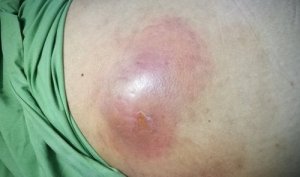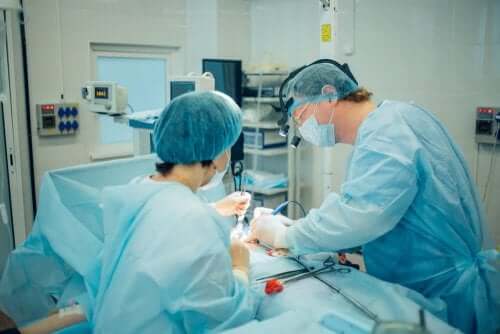What are Intra-Abdominal Abscesses?

Intra-abdominal abscesses are collections of pus located inside the abdominal cavity. They can be located anywhere in the abdomen. They mainly form after surgery, trauma, or diseases that cause infection or abdominal swelling, particularly peritonitis.
Causes of intra-abdominal abscesses

Some of the causes of intra-abdominal abscesses are:
- Infections caused by the inflammation of organs such as the gallbladder or appendix or gastrointestinal perforation.
- Severe abdominal trauma.
- Postoperative abdominal surgery infections.
Symptoms
The most common symptoms of intra-abdominal abscesses are general malaise, fever, and abdominal pain. Sometimes, when a doctor performs a physical examination, they can feel lumps in the abdomen.
Intra-abdominal abscesses may form within one week of gastrointestinal perforation or peritonitis. However, postoperative abscesses may not appear until two to three weeks after surgery, and rarely until several months later.
Although the symptoms vary, most abscesses cause fever and abdominal pain. The symptoms can be mild or severe. Nausea, anorexia, and weight loss are quite common. However, other abscesses, such as a recto-uterine pouch, can cause diarrhea. Also, the proximity to the bladder can cause urgent urination. Subphrenic abscesses also can cause chest symptoms, such as nonproductive cough, chest pain, and dyspnea (breathlessness). Usually, there’s tenderness where the abscess is located. Large abscesses can feel like lumps.
You may also enjoy the following article: What Causes Abdominal Pain on the Left Side?
Types of intra-abdominal abscesses
Intra-abdominal abscesses are classified as intraperitoneal, retroperitoneal, or visceral. Many intra-abdominal abscesses manifest after gastrointestinal perforation or colon cancer.
Others form due to the spread of an infection or secondary inflammation to conditions such as appendicitis, diverticulitis, Crohn’s disease, pancreatitis, pelvic inflammatory disease, or any condition that causes generalized peritonitis.
Abdominal surgery, particularly those that affect the digestive system, is another significant risk factor. The peritoneum can become contaminated during or after surgery.
Undrained intra-abdominal abscesses can damage adjacent structures and vessels, which can lead to bleeding or thrombosis. They may also rupture into the intestine or the peritoneum and even form a cutaneous or urogenital fistula. However, a low abdominal abscess can descend to the thigh.
Read on to learn more: Antibiotics: Some of the Inherent Risks
Diagnosis
Medical professionals typically resort to computed tomography for diagnosis. This technique also allows them to select the best way to drain and treat the infection.
Magnetic resonance imaging (MRI) is another highly accurate imaging test that’s performed in some situations. There are other simpler tests such as abdominal ultrasound. However, the quality of the images isn’t as good as an MRI.
Treatment

The treatment of intra-abdominal abscesses consists of draining the pus and administering antibiotics.
Treatment involves antibiotics and percutaneous or surgical drainage. Almost all intra-abdominal abscesses require drainage, either through surgery or percutaneous catheters.
Medical professionals can drain the abscess through the skin by percutaneous drainage, guided by imaging techniques such as ultrasound. In some serious cases, surgical drainage, which requires surgery in an operating room, may be necessary. Drainage through catheters may be appropriate when the abscess cavities are large and the drainage path doesn’t pass through uncontaminated organs. Furthermore, it’s suitable to resort to drainage through catheters when the origin of the infection is controlled and the pus is liquid enough to flow through the catheter.
Meanwhile, antibiotics can limit the spread of infection through the blood and should be administered before and after the intervention. Treatment often requires drugs that promote the healing of the intestinal flora, such as gentamicin and metronidazole.
All cited sources were thoroughly reviewed by our team to ensure their quality, reliability, currency, and validity. The bibliography of this article was considered reliable and of academic or scientific accuracy.
-
Salud. (2018). Absceso intraabdominal. Https://Www.Clinicadam.Com/Salud/5/.
-
del Pozo, J. L., Manubens, A., García-Quetglas, E., & Ramón Azanza, J. (2008). Absceso intraabdominal posquirúrgico con bacteriemia por Propionibacterium acnes. Enfermedades Infecciosas y Microbiología Clínica. https://doi.org/10.1157/13125647
This text is provided for informational purposes only and does not replace consultation with a professional. If in doubt, consult your specialist.








